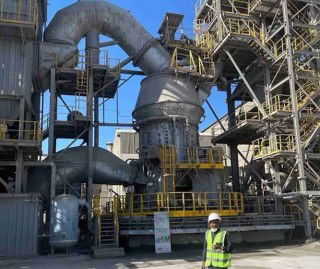Using a special 3D concrete printing material from Heidelberg Materials, the largest 3D printed building in Europe is currently being constructed in Heidelberg, Germany. Printing of the building began at the end of March 2023 and is expected to complete at the end of July 2023. Once completed, the commercial building by real estate company KRAUSGRUPPE, which will be around 54m long, 11m wide and 9m high, will house a data centre.
Heidelberg Materials is supplying around 450t of i.tech® 3D for the project, a material developed specifically for 3D concrete printing that is 100 per cent recyclable. The fully mineral building material contains a binder with a carbon footprint around 55 per cent lower than that of classic Portland cement. Project partner PERI 3D Construction is creating the outer walls and partitions of the future data centre with its 3D construction printer.
“We are pleased to be part of this innovative project and to further develop 3D concrete printing as a particularly resource-efficient construction method with our partners,” said Dr Nicola Kimm, member of the managing board of Heidelberg Materials and chief sustainability officer. “Together we show that sustainability and digitalisation go hand in hand. At Heidelberg Materials, innovative and sustainable products like i.tech® 3D and the development of digital business models are essential elements of our sustainability strategy.”
By 2030, Heidelberg Materials aims to offer circular alternatives for half of its concrete products worldwide. 3D printed products are an integral part of the portfolio. i.tech® 3D was used to print the first residential buildings in Germany in 2020. Since then, Heidelberg Materials has further developed the building material and further reduced its CO₂ content. Through appropriate design planning, the 3D printing process itself allows for up to 70 per cent less material consumption compared with conventional construction methods and thus a further reduction in CO₂. The process also increases the speed and productivity of the construction process and makes construction sites safer through lower dust and noise emissions and reduced use of tools.
